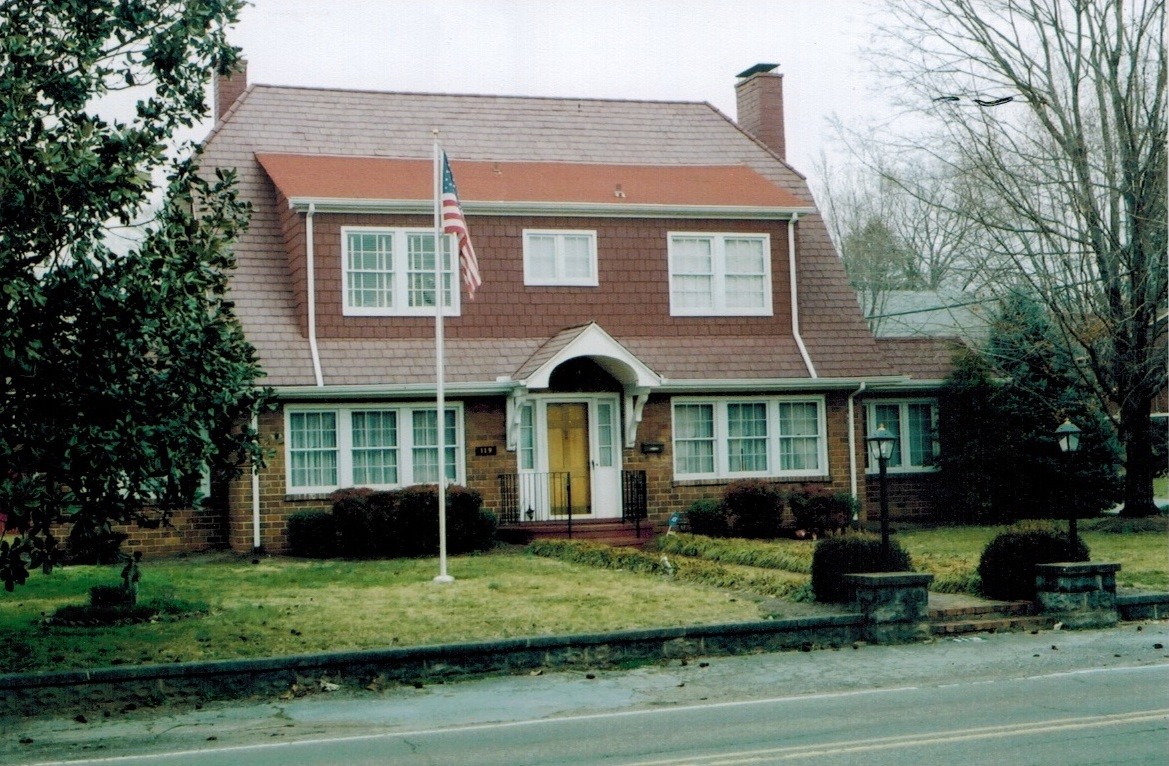“Restricted Home Sites. No City Taxes. On Car Line. City Water. Paved Streets (Paving Paid For). Playground. Schools. Churches.
“Many people are not waiting for the opening on Wednesday, March 14, 1928, but are selecting a Homesite now. WHY? Because Adair Gardens is the only Subdivision with city conveniences on a car line, yet outside the city limits.”
How ironic that the above advertisement would appear only a short time after the announcement of the development of Adair Gardens in an article by veteran Knoxville News Sentinel columnist Bob “Scoop” Cunningham. It was ironic because Cunningham himself would become a long-time resident at 101 Adair Drive.
Cunningham’s article, published on January 22, 1928, was titled, “Land Deal Reveals Tale of Loyalty During Revolution,” and began this way:
“One of history’s unwritten chapters on the Revolutionary War, revealing a link in the unpleasant fate of Ferguson, the British commander at the Battle of King’s Mountain, was disclosed in the purchase yesterday of 25 acres of land four and a half miles north of Knoxville by Asa Ambrister.
“The land, situated in the angle formed by the Fountain City and Smithwood roads, was part of a section which the North Carolina legislature in 1791 granted to John Adair for his contribution to the victory at King’s Mountain. It will be developed into a subdivision called ‘Adair Gardens.’”

Bessie Bye Ambrister (1898-1985) and Asa R. Ambrister (1897-1985)
A search of the warranty deeds at the courthouse revealed the property transaction captioned, “This indenture, made the 19th day of January, A.D. 1928, between James H. Smith, (widower), of Knox County, State of Tennessee, of the first part, and Asa R. Ambrister, of Knoxville, Knox County, Tennessee, of the second part.”
John Adair’s descendant, James Harvey Smith (1840-1932), had sold the remnant of John Adair’s original 640-acres for a consideration of $22,098. Only the Smith homestead remained. Lt. Smith had served for three years during the Civil War with the 1st Tennessee Cavalry (USA) under its intrepid Col. James P. Brownlow.
Smith was 88 years old at the time of the sale and had been born in the large, handmade brick home at the intersection of Tazewell and Jacksboro Pikes built by his father, John Smith, in about 1839. James had spent his entire life there, except for his service in the war. His mother was Mariah Christian Smith, John Adair’s granddaughter.
Ambrister planned an elaborate development located on a streetcar line with a right of way set aside for the proposed new boulevard to run from Greenway to Fountain City. Old records indicate that present-day Broadway was then little more than a farm lane bordering the streetcar line. He planned to start construction soon on a house for his family, the first house in the subdivision. His use of “enriched” concrete for the roads proved wise as, some 70 years later, a city engineer observed that Adair Drive had never needed major repair.
Asa Robert Ambrister was born on Sept. 2, 1897, the son of Floyd L. Ambrister Sr., a Blount County native, who had been active in real estate and in Democratic politics. Floyd had developed Tallassee Springs and the Tallassee Springs Hotel on the Little Tennessee River. The property was later sold to Alcoa Aluminum. Asa had assisted his father at Tallassee and had personally developed homes in Forest Heights and in the Whittle Springs area.
Asa and the former Bessie Bye (1898-1985), daughter of Jesse Woollens Bye Sr. (1850-1930), a native of Pennsylvania, and Frankie J. Bye (1864-1933) were married on December 24, 1921, at Broad Street Methodist Church. The bride’s father owned a large farm just south of Greenway, near the Whittle Springs. There was a large spring on Bye’s property, which bordered First Creek.
Bessie Bye’s brother, John Gates Bye (1889-1950) knew “water” and would spend 41 years with the Knoxville Water Company and its successor, the Knoxville Utilities Board. He eventually became assistant superintendent for the water division. His knowledge, no doubt, became very helpful when water was piped from the Bye spring to supply early Adair Gardens.
Asa Ambrister was a 1918 graduate of Central High School and an outstanding center and captain of the football team under head coach Cox and assistants Bill Emory and Frank Callaway. He served in World War I. The Ambristers were parents of three children, Asa Jr. (CHS 1942), Frank (CHS 1945) and Mary Ann (CHS 1947). Frank followed his father into the field of real estate and lived in Holston Hills.
After his productive life of 77 years, family and friends of Asa R. Ambrister Sr. mourned his passing at Shannondale Health Center on July 29, 1974. Following services in Mann’s Bearden Chapel, he was interred in Greenwood Cemetery.
Ambrister’s pioneering development was recognized in the 1994 application for the U.S. Department of the Interior’s National Register of Historic Places, which was subsequently granted. The form described the Ambrister’s classic Dutch Colonial Revival house at 119 East Adair Drive:
“Two story frame with brick veneer wall covering. Side gables with jerkin head extension on east and west elevation and full length front and rear shed dormers. Slate roof covering with rectangular louvered attic vents. Six over six double hung and four light and eight light casement windows. Gabled front portico and scrolled knee braces. Two interior end brick chimneys. Brick foundation. Rear added about 1960 with aluminum siding wall covering. Irregular plan. Ashlar limestone wall and piers along front of property.” The interior woodwork, the crown molding and mantels are in elegant early 20th Century golden-grained gum.
The Ambrister’s former home had a succession of owners, including S.T. Reagan (land appraiser) in the 1930s, John H. Mullins (L&N Railroad dispatcher) in the 1940s and Carl E. Wells (manager of Hill’s Smithwood Food Mart) in the 1950s. Stanley H. and Ellen Clancy Pickering purchased the house in 1965. Their eight children and their mates and 16 grandchildren still enjoy the spacious living room and the warmth of the fireplace on numerous family occasions each year.
If it “takes a lot of living to make a house a home,” and it does, 119 East Adair Drive is a home in the truest sense of the word.
Author’s note: Thanks to Frank Ambrister, Eric Head, Evelyn Goddard Kirby, Charles J. Morris Jr. and Ellen Clancy Pickering for their assistance with this essay.


